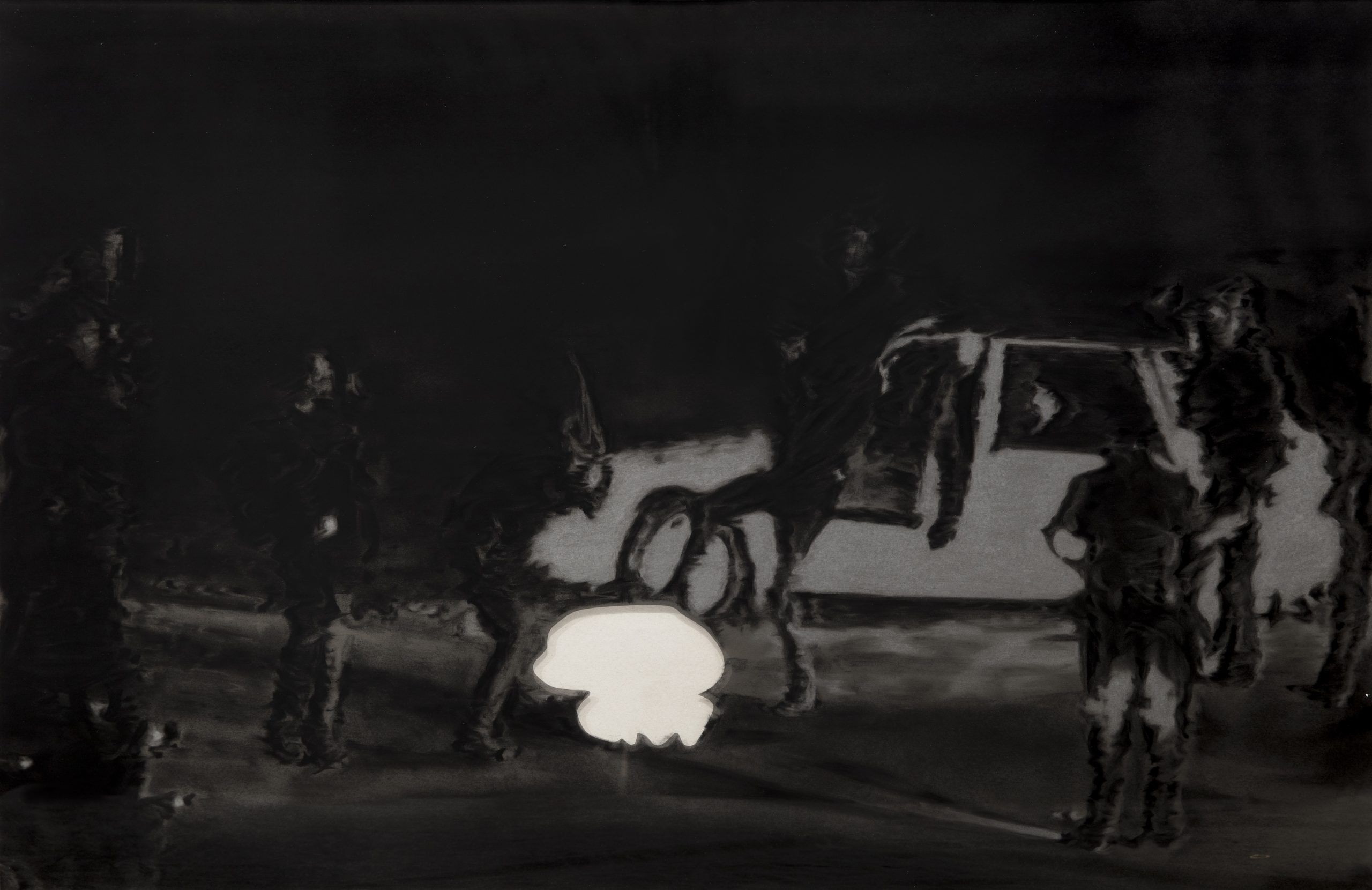I suppose the question, then, is not of the weight of the baton as it lands on one’s head nor the thud of a police boot as it smashes into one’s ribs. I am not talking here of physical pain. No brushstroke of paint or line drawn by pencil can properly convey the pain that travels from the point of impact to one’s gut, lodging itself in the belly—meaning here not the physical place, but rather some place that can only be described as one’s spirit. Is this happening to me? This is happening to me.
Instead, the image here serves as a mirror—each move on the picture plane a reflexive search for where we are in the suffering. Each blow, and therefore, each scar, each bruise, each stream of blood, symbolizing not physical damage but a quest to locate oneself within the physical and spiritual being of the victim.
Where am I in Rodney King?
In Thornton Dial’s No Right in the Wrong, 1992, however, we do not see Rodney King nor his beating at the hands of the Los Angeles Police Department—three officers to be exact, with another eight witnesses. Instead, we see its aftermath—homes aflame as one tormented woman stands amidst the destruction of the surrounding uprising. Occupying the same spatial weight as the lone figure and towering over houses, we also see two looming mythical creatures—possible stand-ins for violent actors or potential harbingers of something worse to come?
The title of the work would presume some judgment of the depicted scene or maybe a melancholic visualization of “Can we all just get along?”, as King lamented during a television appearance during the height of the protests. And yet, I still contend that what we see here moves beyond the fictive illustration of violence. It is the effect of fear and sorrow itself. Not representation, but rather, a conceptual and philosophical (internal) struggle with a moment in time, and therefore, with oneself.
Where am I in the flames?
The thing about righteous rage is that it acts as both revolt and affirmation. In the flames we see both destruction and renewal. Is it possible, then, that we may look at Thornton Dial’s title as not a statement but a question? With each streak of color, we see someone looking for meaning.
As Mr. Dial said, “One thing you can do is leave something for somebody else. You can work for somebody else’s freedom… This is life.” (Mr. Dial Has Something to Say, Alabama Public Television)
I prefer to see No Right in the Wrong as a gift rather than a testament. In its frenetic vibrancy, controlled chaos, the painting asks me to keep looking—to keep utilizing the work as mirror for my own questioning amidst the blaze. Mr. Dial, thus, gives me permission to continue to search for meaning in this history of violence—to see into the threat, the aggression, the fear, the screams, the destruction—as it continues to manifest today… and permission to pick up a brush or a pencil to find meaning.

